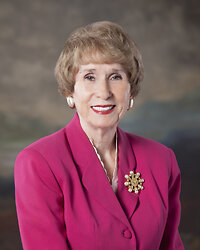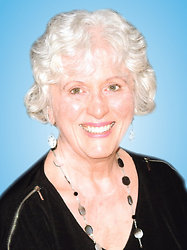While the tradition of giving thanks for one's blessings is timeless, Thanksgiving Day (rated by most Americans as their second favorite holiday) is, historically speaking, a more recent tradition. Despite tales of Pilgrims and Native Americans sharing a feast in October 1621, the holiday as we know it was the creation of one woman-Sarah Josepha Hale, often referred to as "The Mother of Thanksgiving."
Born in New Hampshire in 1788, Sarah was something of a rarity in her day: a successful female writer who by 1837 had founded one popular periodical-American Ladies Magazine-and was the editor of another, Godey's Lady Book.

Sarah had grown up annually celebrating Thanksgiving, even though only New York and a handful of Northern states officially recognized it as a holiday. In the late 1830s, she began campaigning for a nationwide New England-style Thanksgiving holiday. She included Thanksgiving features in her magazine each fall and wrote annual letters to U.S. Presidents, advocating for a national day of thanks.
In the 1840s and ‘50s, many Americans (predominately Protestant) were alarmed by the sudden influx of Irish immigrants (predominately Catholic) fleeing the ravages of Ireland's Great Potato Famine. Sarah envisioned an annual Thanksgiving holiday as a way to spiritually unite all Americans despite their often antagonistic religious differences.
At the same time, the heated debate over slavery was tearing the nation apart, and thanksgiving holidays were unknown in the Southern states. Sarah believed that a national Thanksgiving holiday could ease political tensions. Thanks primarily to Sarah's efforts, more than 30 states and U.S. territories had a Thanksgiving celebration on the books by 1854. Still, her vision of a national holiday remained unfulfilled.
When Civil War erupted in 1861, Sarah believed that recasting the history of America's founding as a quest for religious freedom by Puritan forebears would further the cause of abolition while helping reunite North and South under a shared national narrative.
In 1863, at the war's height, Sarah's decades of annual letters to sitting U.S. Presidents finally paid off. Within a week of receiving a letter from Sarah dated September 28, 1863, President Abraham Lincoln drafted a proclamation fixing the national observation of Thanksgiving on the final Thursday in November.
Why Thursday? Knowing the task of preparing a Thanksgiving feast would fall on women, Sarah believed that celebrating the holiday on Thursday would allow already overworked females a few days to rest before preparing then-traditional large Sunday dinners.
The Thanksgiving tradition of serving turkey, stuffing, cranberry dressing, and pumpkin pie also originated with Sarah. For decades, many of her magazine articles focused on preparing the dishes that had traditionally graced New England tables each autumn, with Turkey as the main course.
Sarah may be responsible for American's love affair with Thanksgiving turkey, but her campaign to nationalize the holiday might never have begun if not for another beloved animal.
Sarah may be responsible for American's love affair with Thanksgiving turkey, but her campaign to nationalize the holiday might never have begun if not for another beloved animal.
Sarah Josepha Hale's fame as a writer began with the success of simple children's poem she had written in 1830- "Mary Had a Little Lamb."
CURRENT COLUMNS
Relationships 
When Your Security Blanket is in the Dryerby Dr. Bill AustinOn The Front Porch With You 
Memories of Homeby Rob LauerChildren First 
Dandelion Timeby Becky AdamsPublisher’s Point 
Time To Moveby Jean Loxley-Barnard
